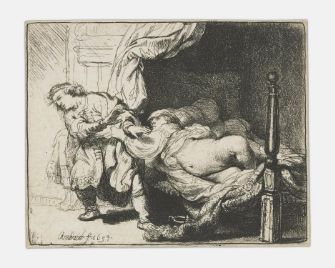Zephirach or Zenobia
The fact that the woman in the etching from 1559 is identified by the name Zephirach demonstrates the popularity of the name coined by Cornelius Crocus. But not all playwrights went with this choice of name.
The large variety of names for this character in plays about Joseph written during the sixteenth and seventeenth centuries is striking. In Spain, despite the influence from Jewish and Islamic versions of the story, playwrights did not call the character Zuleikha. A popular name in the Spanish plays is Zenobia, which first appears in the Tragedia llamada Josefina by Miguel de Carvajal. This play was published in the same year that Crocus’ play was first performed. The choice of name seems strange, as the historical figure of Zenobia is known for her chastity. We can only assume that the name was chosen because of its exotic flavor.
The name Zenobia for Potiphar’s wife makes an appearance in the Amsterdam theatre at the end of the seventeenth century. Isaac de Matatia Aboab, a prominent member of the Sephardic community in Amsterdam, uses it in his Jewish play about Joseph. The family fled religious persecution in Spain and went to Portugal first before coming to the Netherlands. There, Isaac de Matatia Aboab composed his play El Perseguido Dichoso (The happy persecution). The play is highly entertaining, focusing on intersecting love intrigues around Joseph in the style of a Spanish love comedy. It incorporates a lot of material from Jewish and Islamic stories about Joseph. It is now kept in the Ets Haim archive in Amsterdam.
In Amsterdam at the end of the seventeenth century, the Dutch Zephirach and the Spanish Zenobia meet after 150 years. Are they still the same person? And what difference does a name make?
Follow the link below for another Joseph etching...
Related things to this object
